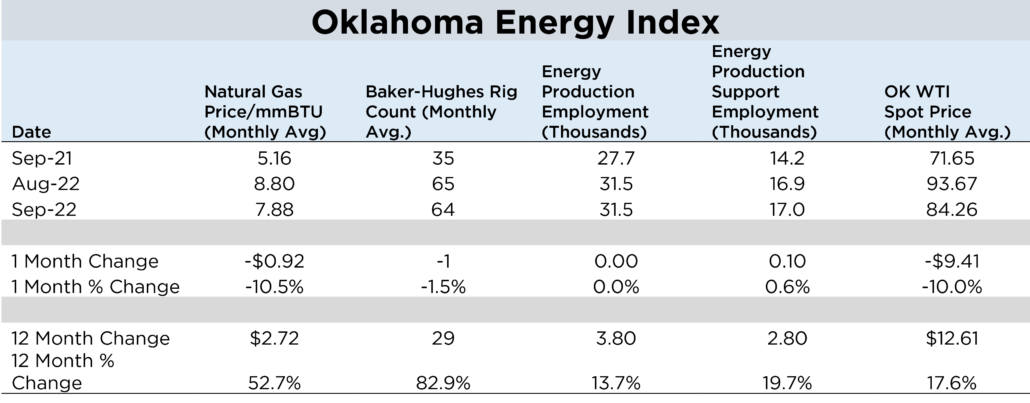Industry growth stalls, foreshadows coming economic slowdown in Oklahoma
[av_post_meta av_uid=’av-8xupd’]

The recovery in Oklahoma’s oil and natural gas sector stalled in late summer, but is moderating activity in Oklahoma’s defining industry a bellwether for a coming slowdown in the state’s economy?
The most recent Oklahoma Energy Index (OEI) shows growth in the state’s oil and natural gas industry has slowed following a calendar year of expansion driven by increased commodity prices. The most recent Energy Index fell by 1.5% for the month and now stands at 130.4. The index remains 23% higher than year-ago levels.
Dr. Russell Evans, who compiles the OEI, said signs are beginning to show the Federal Reserve’s restrictive policy is distressing household budgets and driving changes in consumer behavior and the sense of strength in the Oklahoma economy will give way to a reality of a challenging environment in 2023. The ability of the oil and natural gas industry to maintain some strength in this period may well determine the severity of our state recession.
“Oklahoma’s energy sector remains a critical driver of economic activity and has historically offered a buffer against U.S. recessions,” said Evans, partner and chief economist at Thorberg Collectorate. “While the sector has regained some strength, it may prove insufficient to provide support against coming economic weakness. The coming months will reveal if furthering weakness in the industry is an indicator of coming economic weakness or if the industry can hold its footing to provide much needed support to the state’s economy.”
While both crude oil and natural gas spot prices fell in September, both remain in ranges that would be expected to support additional drilling and production, Evans said. Instead, a combination of supply chain challenges, regulatory uncertainty, and financial market constraints are limiting the responsiveness of the industry to the price environment. Pre-pandemic crude oil production peaked at 627,000 barrels per day and 5.3% of U.S. production, but while U.S. production has regained pre-pandemic levels, Oklahoma production has not. At summer’s end, oil production in Oklahoma held at 413,000 barrels per day, down 34% from peak and representing 3.4% of U.S. production.
The OEI is a comprehensive measure of the state’s oil and natural gas economy established to track industry growth rates and cycles in one of the country’s most active energy-producing states. The OEI is a joint project of The Petroleum Alliance of Oklahoma and Thorberg Collectorate.






